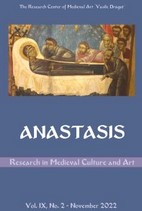A Case Study of Shiite Art and Religious-Ritual Symbols in Safavid Metal Works
A Case Study of Shiite Art and Religious-Ritual Symbols in Safavid Metal Works
Author(s): Mohammad Ismail Khalaji, Araz Najafi, Farzad MafiSubject(s): Visual Arts, Islam studies, History of Islam, History of Art
Published by: Editura ARTES
Keywords: Metalworking; Safavid; Form and Motif; Symbology;
Summary/Abstract: Traditional artworks in different periods, especially after the advent of Islam in Iran, have benefited a lot from text adornment, due to the emphasis of this religion on science, literacy, and its positive approach to the use of calligraphy. Needless to say, the use of calligraphy was not merely decorative; it was used more to convey a message and show the status of an issue. Metal working in the Safavid period has many artistic and religious values in material and spiritual aspects. Safavid artists have used religious themes, mystical, and Quranic concepts in decorating their works. In their works, they have revealed the mysterious manifestations of mysticism, Islamic religion, and Shiite religion. Samples of metal objects with calligraphy with Quranic content and religious devotions have been investigated. The findings indicate that, in addition to having a decorative aspect, Safavid metalworking has taken its motifs from the common religious thought of that period, namely the Shiite religion. Inside their forms and motifs, these objects are created symbolically as an illustration of the beliefs, rituals, and faith of the Safavid period. Those metal objects that have Quranic verses have a special use, and they are generally used for religious purposes. The content of the verses used, above all, has determined the volume and practical importance of the verse; the artist, therefore, has mostly used the small chapters of the 30th part of the Quran, Ayat al-Korsi, and short verses that have a message in them. The contents of the present article have been collected by library methods; it has been prepared based on documents and in a descriptive-analytical and comparative way. In this article, only a limited number of objects have been examined, which have received more attention than the decorative aspect.
Journal: Anastasis Research in Medieval Culture and Art
- Issue Year: IX/2022
- Issue No: 2
- Page Range: 107-124
- Page Count: 18
- Language: English

